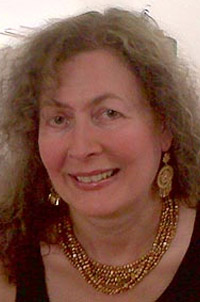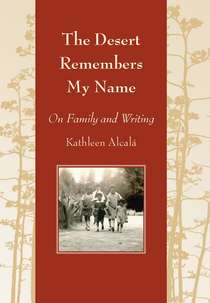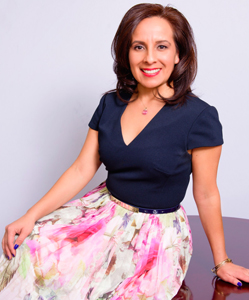We invite you to read our interview with Ms. Kathleen Alcalá. Not only is Ms. Alcalá a critically acclaimed novelist, but she is also the author of a short story collection alongside a compilation of essays based on her family history. Her novels are set in 19th Century Mexico and the Southwest.
Her parents were born in Mexico, but during the Mexican Revolution moved north. Kathleen Alcalá was born in Compton, California, but grew up in San Bernardino, California. She currently resides in Seattle, Washington. Ms. Alcalá received her B.A. from Stanford University and an M.A. from the University of Washington. Just recently she completed a Master of Fine Arts at the University of New Orleans. In addition to these accomplishments she has also received many book awards. Read our interview with Ms. Alcalá, and you will quickly see why she is known as the author of creating magic realism.


What inspired you to get into writing?
I probably always wanted to write, but I came of age during the Practical Seventies. My undergraduate degree is in Linguistics, and I went immediately to work for the Democratic National Committee in Washington D.C., followed by the documentary unit at KNBC in Los Angeles, and the Corporation for Public Broadcasting. After that, I helped start a public radio station in Colorado, then moved to Seattle in 1983 where my husband manages the public radio station. This gave me a chance to return to school and study creative writing.
I tell people I have had many job titles, but I have always been a writer. My mother came from a large family of story-tellers, and my first written stories were inspired by these dramatic recountings of family history. It provided a particular world view that is often called “magic realism” by the critics, but you and I know it is just how we tell stories.
Can you tell us about your challenges in getting your first book published?
I have been very fortunate in my writing career. I started sending stories out when I was in grad school, and had two or three accepted before I finished. One was published in the Calyx Journal, and Calyx Books became the publisher of my first book, “Mrs. Vargas and the Dead Naturalist.” Sending out individual stories helps writers establish contact with lots of editors, in addition to providing invaluable feedback on your work. I then published three novels with Chronicle Books, and a collection of essays with the University of Arizona Press. All of my work is still in print, even though this year is the 20th anniversary of the publication of “Mrs. Vargas.”
In your opinion, what are the most important elements of good writing and must-have tools for writers?
Taking the time to learn to edit your own work. Just because you got it on paper doesn’t mean you are finished. A good writer learns to distance herself from the work long enough to make it sparkle, make it readily available to a reader.
Even harder, a writer learns to take constructive criticism from others. A good editor is worth his or her weight in gold. There are craft techniques that can be taught, but humbling yourself, really looking at the work as separate from yourself, is important.
In addition, good writers read, read, read. There are stories and novels that will break your heart, they are so well-written, and a writer learns to go back and say “What can I learn from this?” Nothing substitutes for being well-read.
What people have most influenced your life in the realm of writing?
I read widely, if not deeply, from the Irish writers to science fiction. In addition to Vladimir Nabokov and Thomas Pynchon, I read Ana Castillo, Louise Erdrich, Leslie Marmon Silko, Alberto Rios, Haruki Murakami and recently, Neil Stephensen, China Mieville, Aimee Bender and Jennifer Egan. I won’t call any of these people my peers, because they are better writers, but I try to keep up with my contemporaries.
If you had to pick a writer for a mentor, who would you choose and why?
It’s a toss-up between Leslie Marmon Silko and Ursula LeGuin. I’ve never met Silko, but her novels are brave in a way that is rare. She is not afraid to be difficult or confrontational in order to be true to the story. I also use her book of essays, “Yellow Woman and the Beauty of the Spirit” to teach creative writing. LeGuin is a master storyteller, no matter what the subject. Her last novel, Lavinia, is told from the point of view of a character in The Aeneid who is voiceless in the original story. Lavinia communes with the spirit of Virgil in order to both learn her story and make the right decisions to play it out. Very subtle, very wonderful, but LeGuin doesn’t let her writerly chops get in the way of entertaining her readers. I think she has decided to retire, so we will just have to start filling the void.
Can you tell us about any upcoming projects and/or recent books?
I am working on a creative nonfiction book called “Notes from a Food Oasis,” about whether or not we could sustain ourselves with food grown only on Bainbridge Island. In it, I am the Clueless Eater who gets to ask a lot of dumb questions. All of my work is about our place in the universe and how we can honor and repair it. Every story that is written or told has the capacity to heal.
Visit me at www.kathleenalcala.com!




